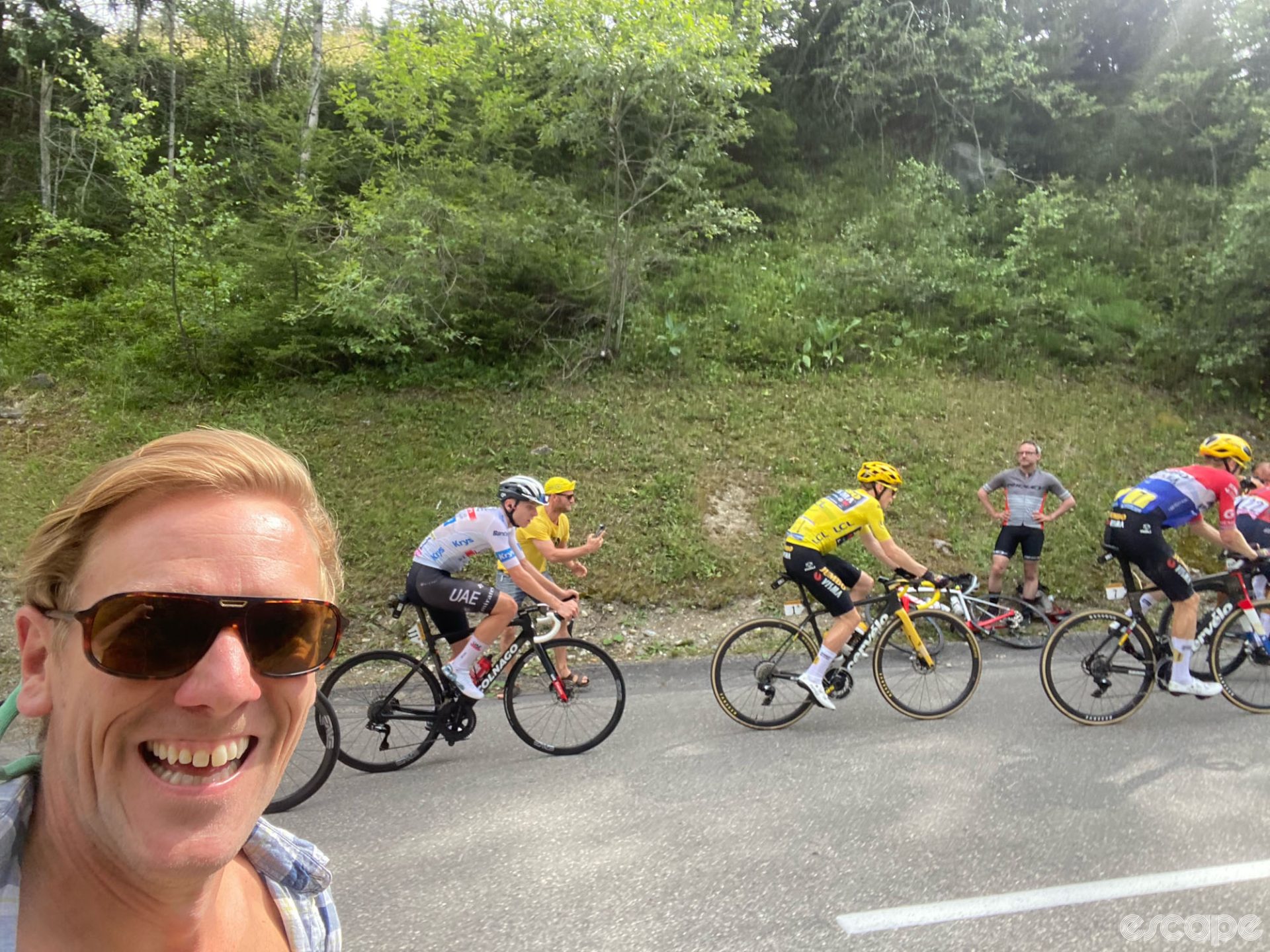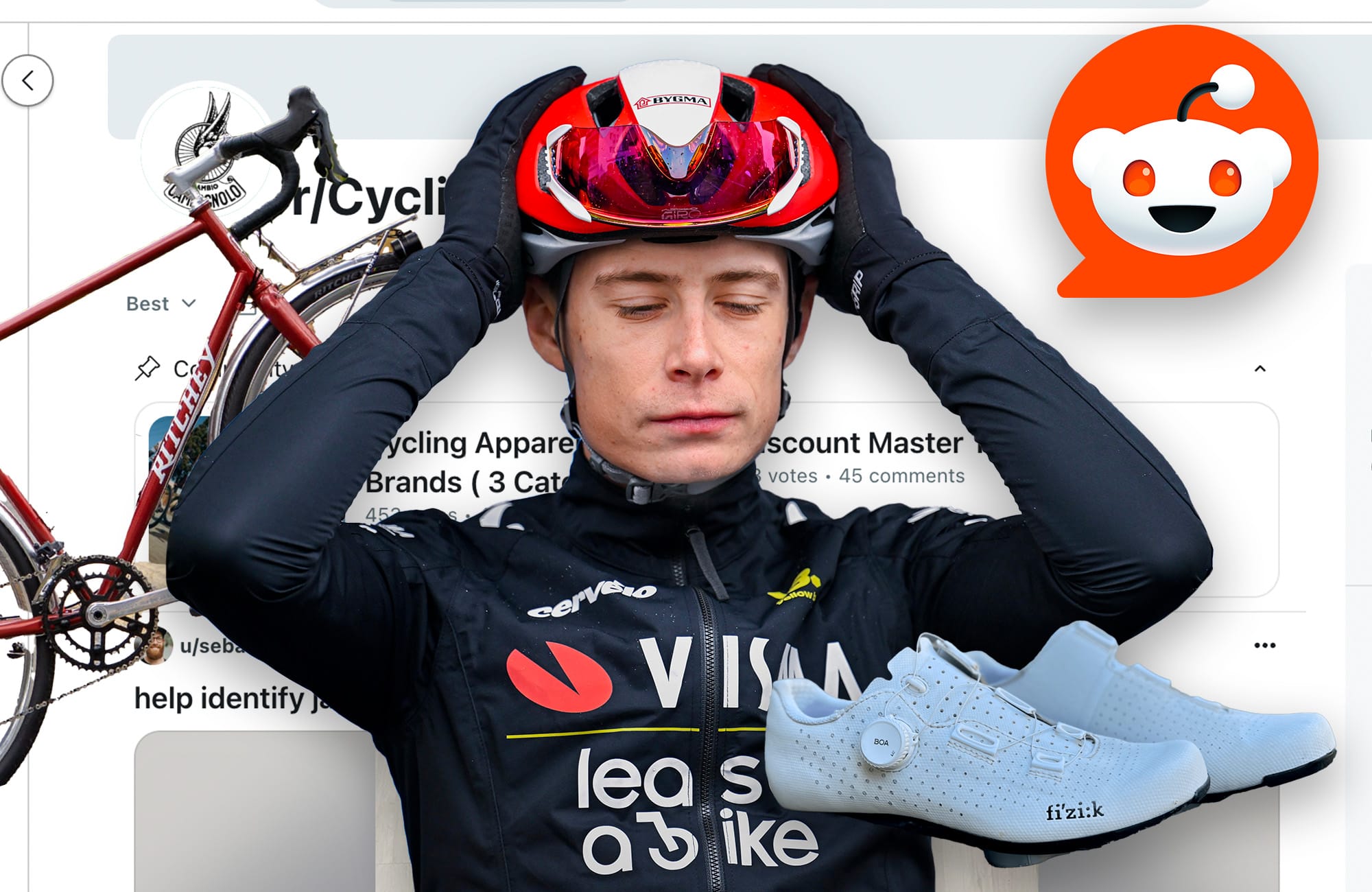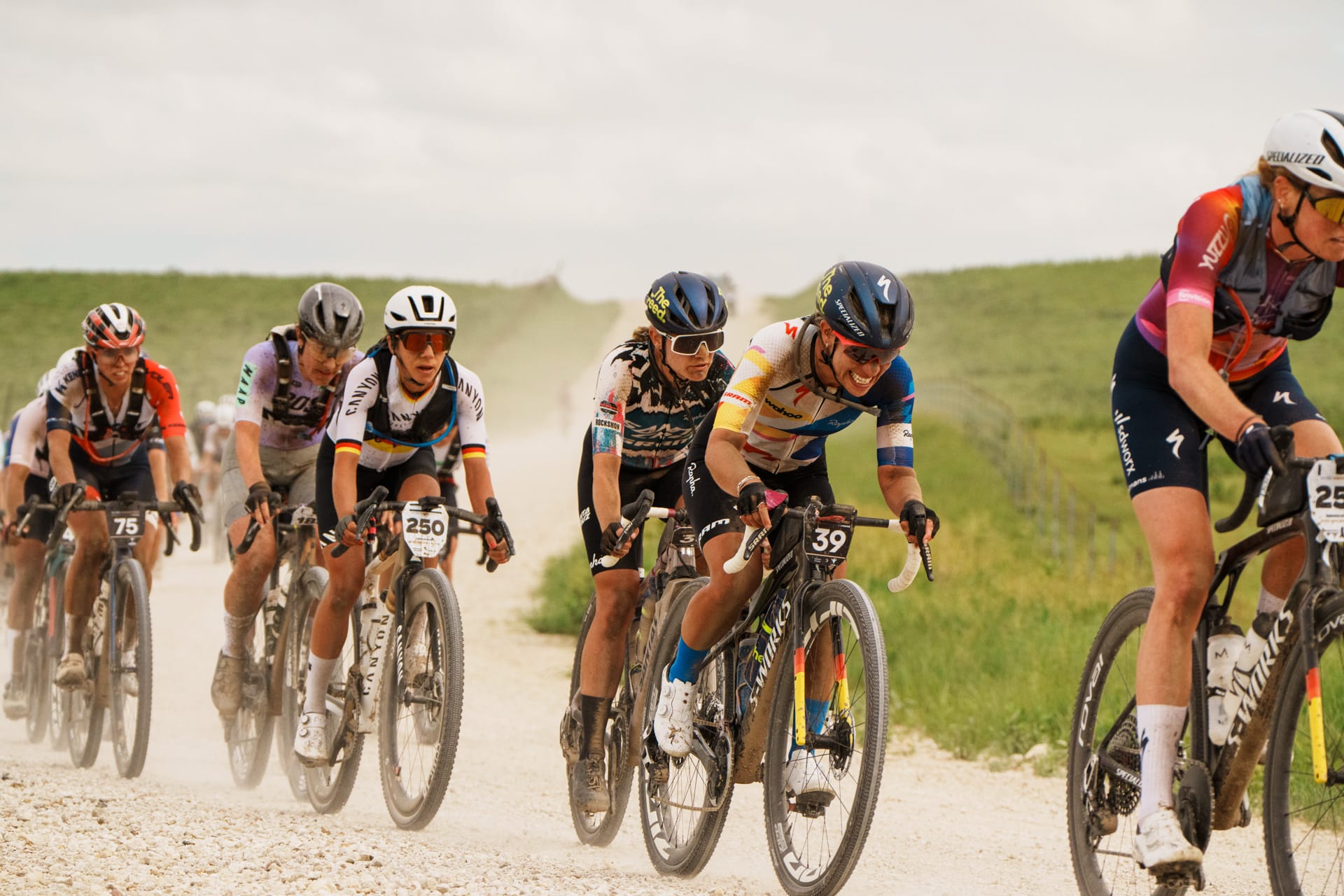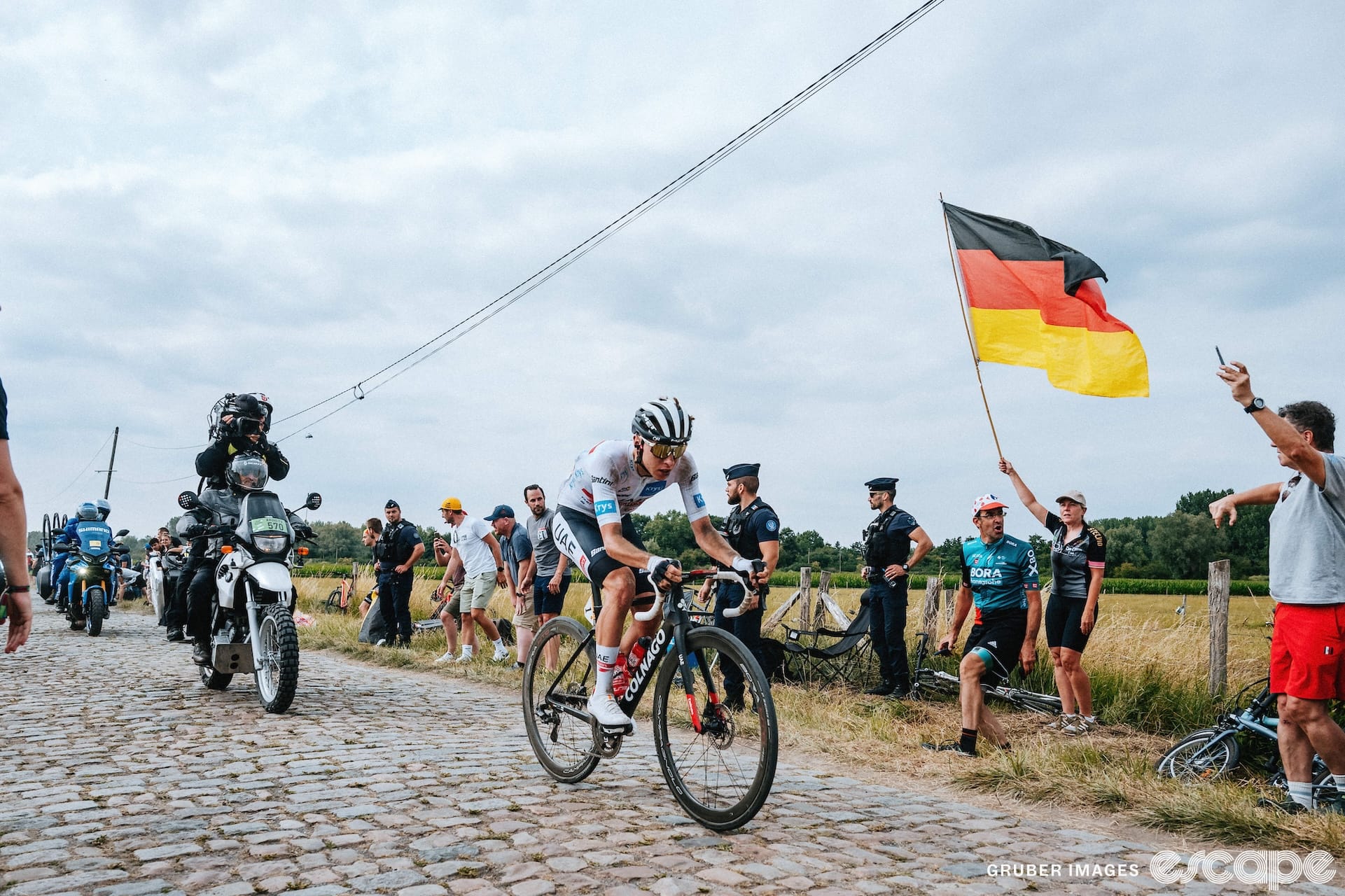Picture it! You’re on the side of an Alpine climb, your superhero suit fits perfectly, you’re warmed up and ready to run (at a respectful distance, of course) alongside the peloton somewhere in the Alps. You just ate your weight in cheese; you definitely drank an obscene volume of really cheap but quite delicious wine. You are sunburned. Earlier in the day, you met the Flat Earth guy, the perfect mascot for the rampant stupidity of our times, a man as ubiquitous at Tour stages these days as Didi the Devil was at the turn of the millennium. You don’t know it yet, but tomorrow you’ll meet Didi himself.
To do any of these things, you have to be in France in July.
This story is all about how to be a tourist at the 2024 Tour de France. I’m your concierge. My name is Caley Fretz and I’m a serial Tour de France-goer. My credentials: 13 Tours covered, something like 200 French towns and cities visited, two years living on the edge of the Alps, a deep love and also healthy disdain for France and the French.
For the purposes of simplicity, we’re going to assume you have roughly one week's vacation to go watch the Tour. I’ll run through some of the basics: how to pick which week of the race to go to, how to structure that week, and how to get around. And then get into some finer details you won’t find anywhere else.
This piece is for the rugged individualists, who want to fly free of tour busses and guided trips, and figure it out on their own. I’ll talk a bit about tour guides below, but that’s not the focus here. This is a primer for doing it yourself. I’ll also jump into the comments (as will our other Tour experts, plus hopefully some actual French people) to answer any other questions.
When to go: Pick your week
The Tour de France is three weeks long.* A thorough look at the route after the presentation on Wednesday makes one thing clear: the middle week is not your week. There are some gems in there but, for the most part, they’re going fly past at 50 kph and you’re going to stay in a hotel with bedbugs. You want to go to the first or last week this year.
This leaves two options: Grand Depart through stage 4 or so, or the last week, Pyrenees and back into the Alps. Let’s run through two sample itineraries.
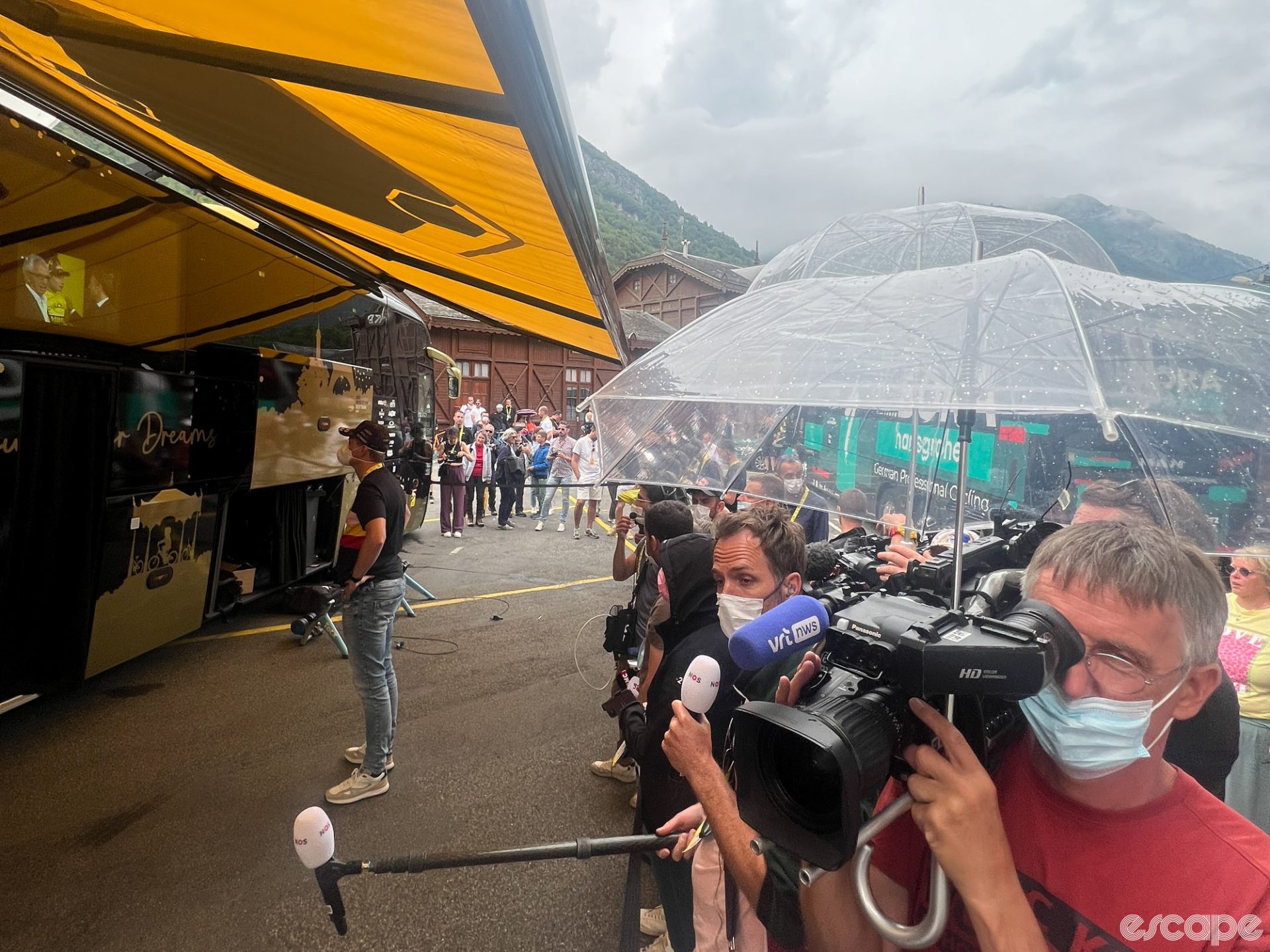
Option 1: The Italian Job
Dates: Arrive June 27, Depart July 4
Fly Into: Florence
Fly out of: Lyon or Geneva
I like this option. Italy is great; Florence is beautiful. The food is way better than France and you’ll still get some time in the Alps, and even a TT and gravel stage if you stay long enough. If you’re fascinated by Marco Pantani, the finish of the first stage is in the coastal town where he died. There’s lots going on in this first week. Here’s how I’d do it:
Arrive: Thursday, July 27
Two days out from the race, you can get settled in Florence (stay on the south bank of the Arno river for slightly less touristy vibes) and then hit the team presentation. As a spectacle, the presentation is a bit silly, but a good time if you’ve never been to a major bike race. You’ll get a feel for the Tour and it will have some great Italian flavor as well. Go to Bulli and Balene for a spritz afterward.
Friday, June 28
Hang out in Florence. It’s one of the coolest cities on Earth. Go for a ride to the southwest if you have a bike (and you should). No bike? Try one of Florence's bajillion museums, including the often-overlooked gem of the Museo Opera del Duomo, which houses most of the art from the famed cathedral complex, including Ghiberti's Gates of Paradise, and doesn't require timed entry like the Uffizi and Accademia galleries.
Saturday, June 29: Stage 1
Stage starts are the place to see the riders. They are much more chill, mostly because they are much less tired than they will be post-stage when they are just trying to get to the hotel as fast as possible.
The precise access protocol of any given day is subject to change. Generally, there is a fenced-off section for team busses, but the fences are not far from the busses themselves so you can hang over those fences and ask for autographs and stuff. Plus, they usually can’t fit all the teams in the fenced-off area (you’d think they’d get better at this - they know how many teams are there well ahead of time) so some team busses will be fully in the public, down some nearby side street.
Sometimes, there are no fences at all. No idea why. C’est la vie.
Anyway, go to the start. It will be an absolute cluster in Florence proper, so don’t try to drive anywhere near it. This is why you need to book a place (soon!) near downtown, so you can walk.
Once the race starts, go for a bike ride. Unless you really want to see Rimini and make a Pantani pilgrimage, it won’t be worth going to the finish. Head to the next day’s finish in Bologna next.
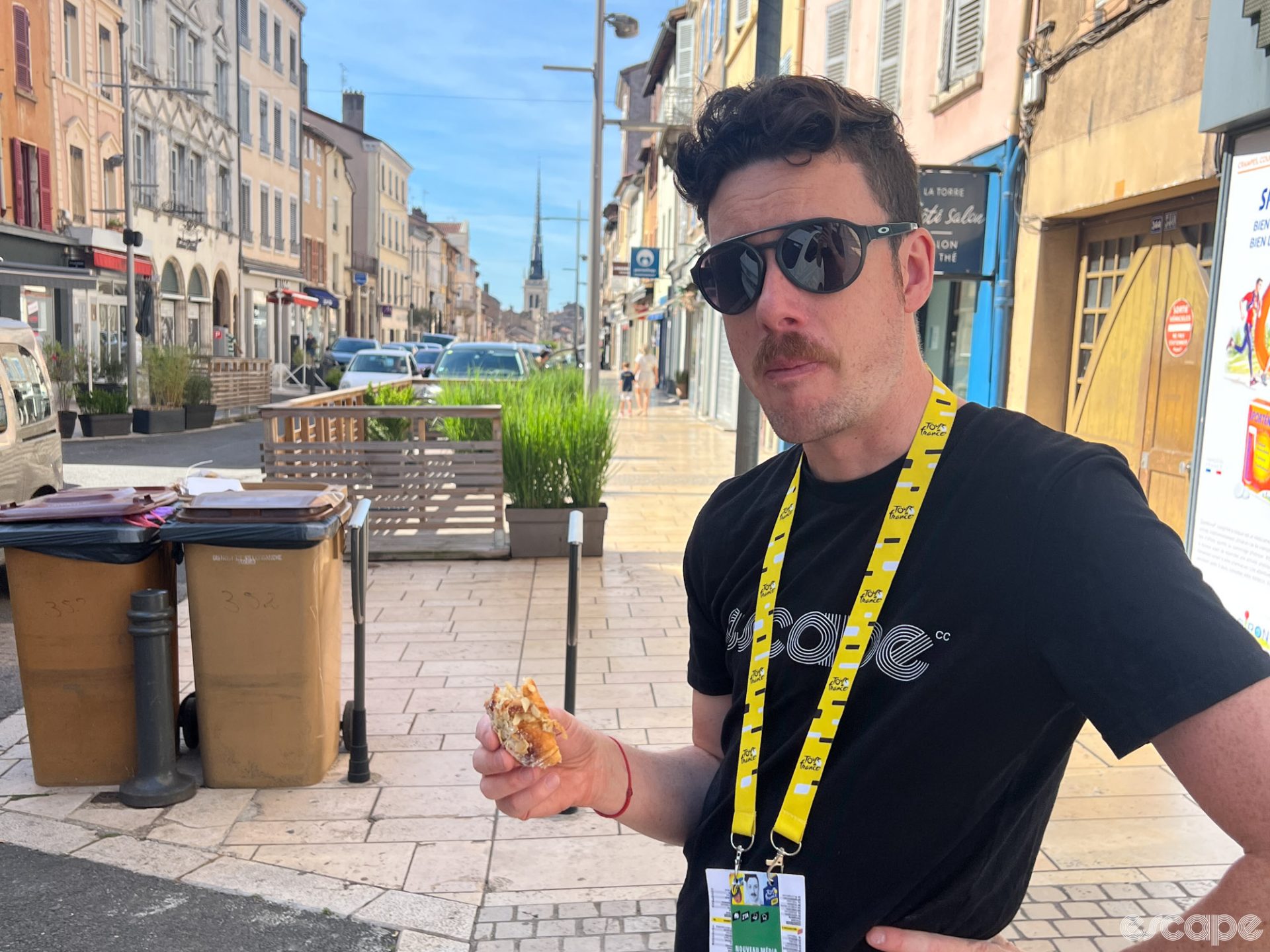
Sunday, June 30: Stage 2
Today, we’re seeing a finish. If you avoided the Rimini/Cesenatico finish and start, you have all morning to enjoy Bologna, or to make your way from Florence.
The race will finish around 5:30 pm local time. When the detailed course maps are released, take a close look at where the finish line is, and which direction the race course comes into town from. You want to enter from the opposite direction. It will be less busy.
You’re going to have to walk, or ride, if you have a bike. Park where you can (legal parking is sort of optional when all local government employees are busy at the bike race) and make your way to the finish line. To get a spot on the barriers in the last 200 meters, you’re going to have to show up 2+ hours in advance or get very lucky. If you go to 400 m or so you can slot in pretty close to the riders arriving. The speed is crazy. Enjoy it. Go for dinner at Trattoria Bertozzi.
Option 2: Head to the slopes of the San Luca climb near the finish. Should be good fun. The same rules apply: drive as close as you can, ride or walk the rest. Better yet, check in at your accommodations in Bologna and ride to San Luca.
Monday, July 1: Stage 3
Skip this whole stage. Head to Saint-Michele-de-Mauriene or Valloire. Ride the Galibier from the north side. Wait for the race to come to you.
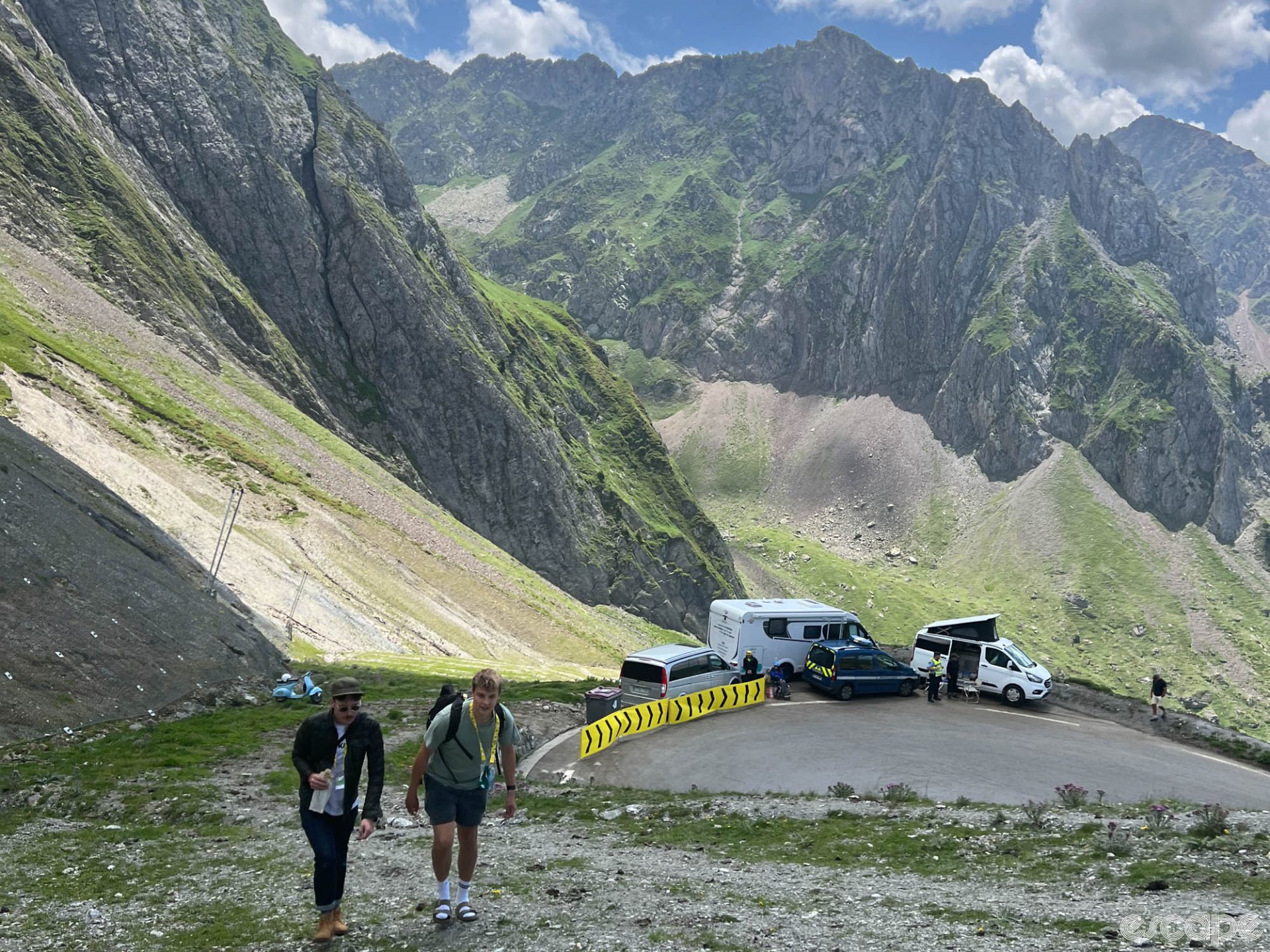
Tuesday, July 2: Stage 4
The first mountain stage of the Tour de France goes over both Sestrière and the Col du Galibier. If you did as you’re told and head straight for Valloire or Saint-Michele-de-Mauriene then you’re already in prime position.
On the morning of the stage, pack lunch, a second lunch, a good jacket (a really good, insulated one – something you’d wear in winter) and climb up to the Galibier. It’s roughly 35 km and 2000 m of climbing from Saint-Michel-de-Mauriene. Not a small day. And you’ll have to get all the way back, though it is mostly downhill.
Stop near the top of the Galibier. The farther you descend down the south side, which the race will be climbing, the more you’ll have to climb after the race. It’s beautiful up there. It’s also at more than 2,000 m and TRUST ME ON THIS the weather could turn from pleasant to absolutely deadly in minutes. 30°C to 4° and hailing? Hypothermia? Yeah. Bring everything you might need, even if the weather looks nice. Mountains create their own weather, it can get not nice real fast.
They will close the Galibier to bikes at some point. When I find out when, I’ll add it here. But you’ll need to leave early.
Wednesday, July 3: Stage 5
Stay wherever you find a place near the Galibier and ride. This is now a riding vacation. You’ve seen a few days of the Tour, a big mountain stage, a start and a finish, and now it’s time to ride some bikes for a few days.
Thursday, July 4: Stage 6
See above.
Optional add-on:
Stages 7 and 9 are interesting. Stage 7 is a time trial. TTs are great for easy, all-day viewing. Stage 9 is the gravel day. If you wanted to go put yourself out on a gravel sector, that’d be a good time. But that makes much longer trip, and Troyes is not close to the Galibier, so this is definitely an optional extra.
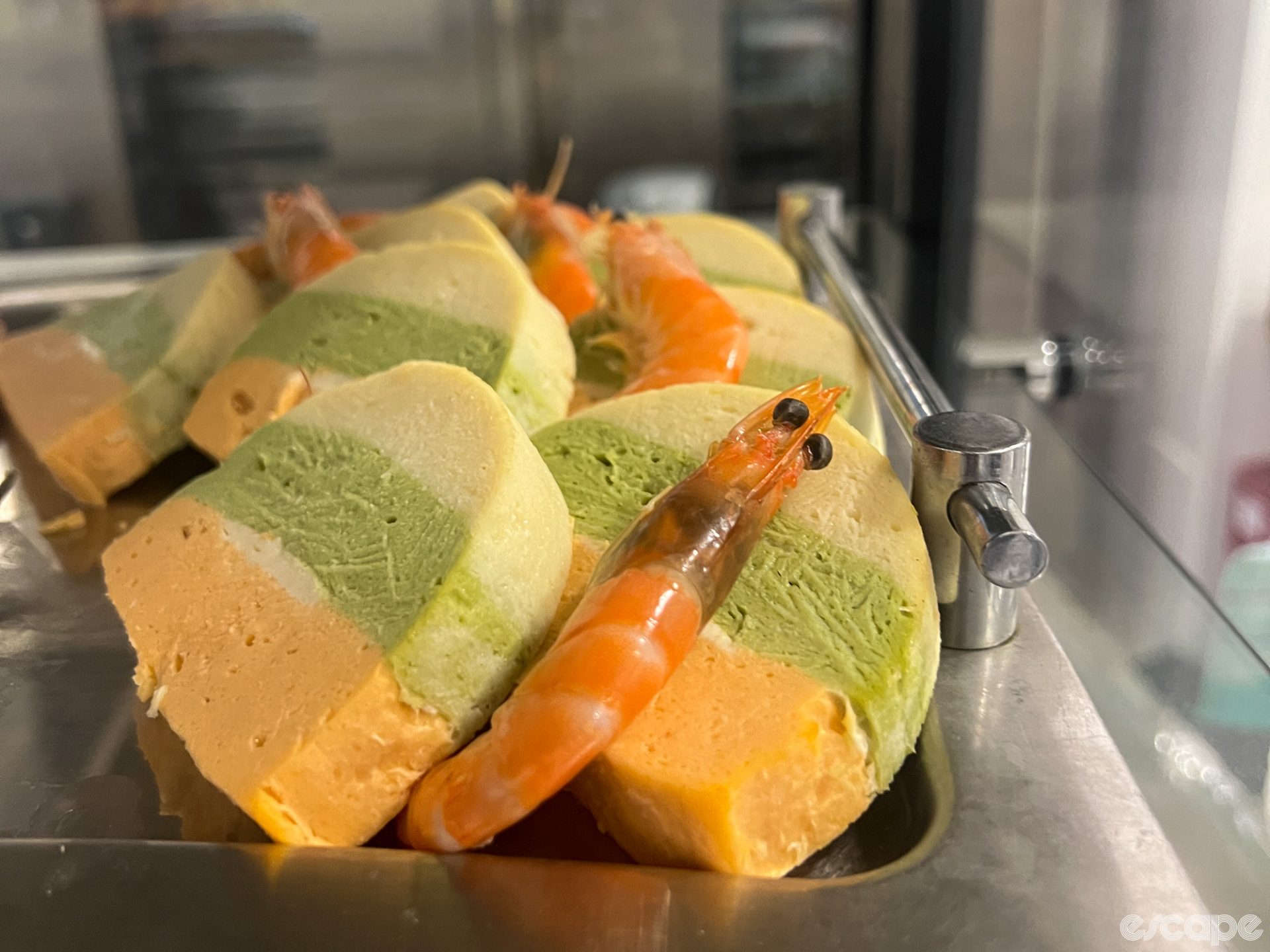
Option 2: Pyrenees to the Alps
Dates: Arrive July 12, Depart July 22
Fly into: Toulouse or Nice
Fly out of: Nice
This itinerary starts in Pau and ends in Nice, for the first non-Paris Tour finale. It jumps straight into the action and features a bit of riding in the middle, plus a gorgeous finish.
I’m also cheating a bit. This one is a longer stay, even before travel add-ons. One could remove the Pyreneean bit if you need it to be shorter.
Friday, July 12: Stage 13
Fly into Toulouse, drive into the Pyrenees. I recommend staying somewhere near Arreau, though finding accommodation up the valleys will be tricky with the Tour coming through. Get to your accommodation, unpack your bike, and get a nice ride in. There are dozens of amazing climbs nearby: the Col d'Aspin and Hourquette l'Ancizan, both straight up out of town, or Pla d'Adet and Val Louron just a bit up valley.
Saturday, July 13: Stage 14
Staying in Arreau (or nearby) sets you up for stage 13, which starts in Pau and ends atop Plat d’Adet, a mountaintop finish. We’re getting straight into it.
You have the option of heading to the final climb, Plat d’Adet, or the penultimate climb, La Hourquette d’Ancizan. Both will be great viewing; if we had to pick one, obviously the final climb is the one.
Head up early. They close roads to bikes earlier than they used to, but if you roll onto the climb by 10 AM or so you should have no issues. Bring your superman costume, lunch, and a big jacket just in case.

Sunday, July 14: Stage 15
Bastille Day! You cannot go to the start and finish today. It’s too far, and without some sort of official car sticker you will get stuck somewhere and not make it. You have to pick one. Because you’re already near the start, that’s my suggestion. Head to Loudenvielle. You can likely ride there from wherever you stayed the night before, and then ride back after the start for a solid day on the bike. Find a bar somewhere to watch the race itself, which will be worth watching.
Monday, July 15: Rest Day
Go for a ride in the morning. You’re still near Arreau, and there are lots of great options. I highly recommend a loop that includes Tuc de Labatiadère.
The race has headed toward Narbonne for its rest day, and will then head into the Alps. It’s a decent drive today; ride in the morning and then get going. You want to get all the way to Nîmes, four and a half hours away. Stay in Nîmes tonight.
Tuesday, July 16: Stage 16, Gruissan to Nîmes
This is your opportunity to hang out in a nice French city and then catch the finish of a sprint stage, a very different feel from a climbing stage. Wake up, go find a coffee and a croissant, and scout the finish in Nîmes for later. You want to identify the finish line, obviously, but also keep an eye out for yellow signs with a P on them. The yellow indicates team parking; this is where the team busses will be parked later. When the time comes, head out and bang on the boards in the final 300m and then run to the team busses to see some riders up close.
Wednesday, July 17: Stage 17
Drive to Nice. This means missing stages 17 and 18, but the riding in Nice is unbelievable and you will stay there until the end of the race.
Once in Nice, go for a ride along the coast to get all the driving out of your legs. It’s gorgeous. Avoid any of the climbs you’ve heard of – Col d’Eze for example – because they are actually quite busy when a race isn’t on. Look for tiny squiggly lines on the map, these are where you want to be. If you can get out to Col de Braus, do it.
Thursday, July 18: Stage 18
Go for a bike ride, watch the race from a bar. Maybe Col de la Madone, just to see what all the fuss is about? It’s the start of a lovely loop anyway.
Friday, July 19: Stage 19
If you’re up for it, do a day trip (via car, it’s about 90 minutes) up to Isola 2000. This is going to be an epic stage, and being at the finish could be worthwhile. The same rules apply as any other mountain stage: pick a spot to park, ride the rest of the way, leave early because the roads close.
The other option, and probably the one I’d take if the race is still close: Do a ride from Nice in the morning, watch the stage on TV all afternoon. Chances are you’ll miss what actually happens if you head to the stage itself, so if GC fireworks still seem likely, maybe just watch from afar.
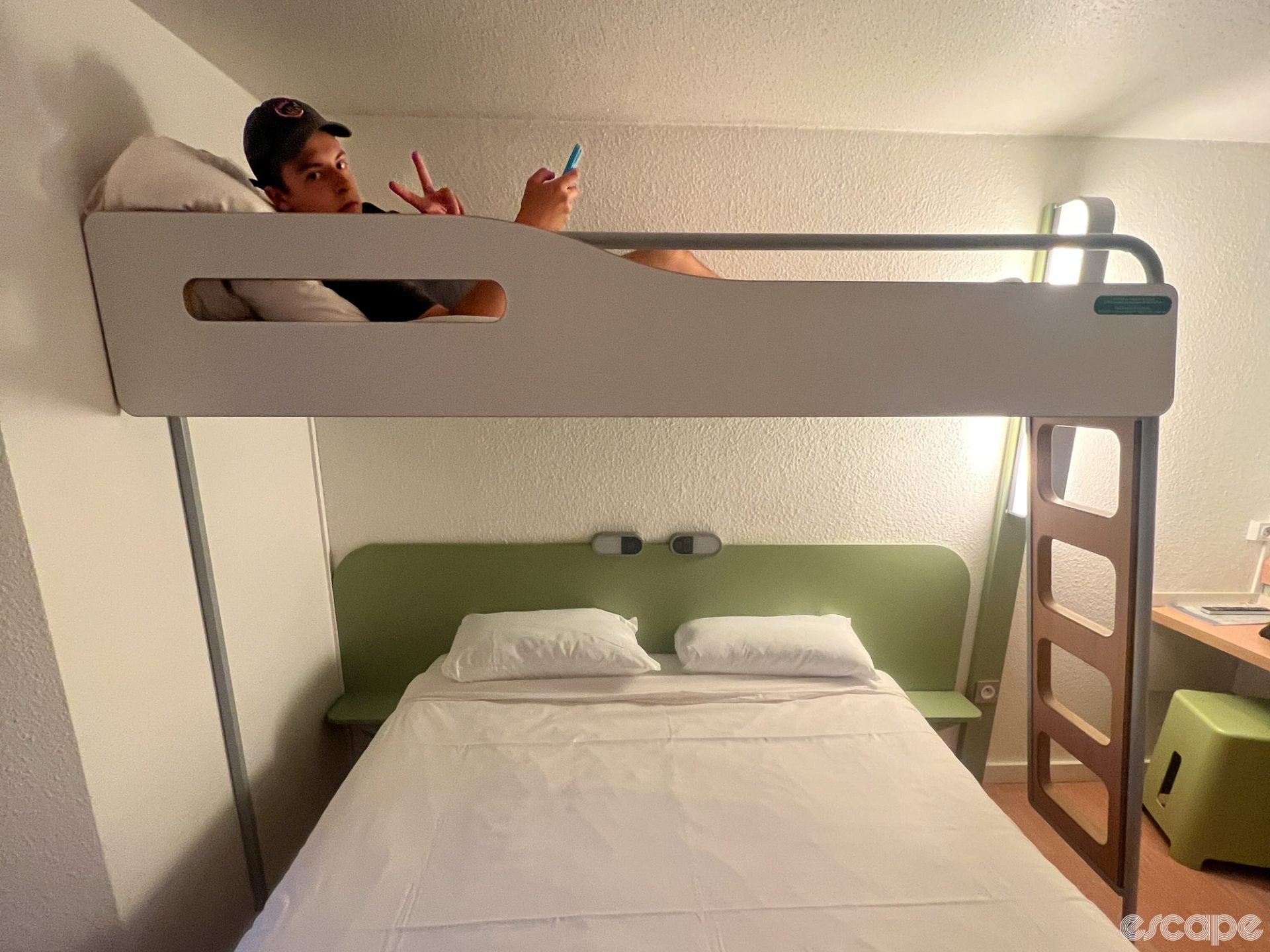
Saturday, July 20: Stage 20
Two options: head to the start in Nice for another shot at getting autographs and such, or ride out early and run in your superhero suit alongside the riders (again: respectable distance, people) on the gorgeous switchbacks of the Col de Braus. Can’t do both.
Sunday, July 21: Stage 21
Time trials may not always be great viewing on TV, but they are superb in person. Instead of watching a peloton go by in 30 seconds, you get a riders slinging past at full tilt for hours.
This course is a classic, starting in Monaco and ending in Nice, going via La Turbie and Col d’Èze. You’re still in Nice, so the easy thing to do is map out a route from your accomondations to somewhere on course, preferably taking a bit of a long way to get there. My suggestion? Find yourself on Col d’Eze, which is short from this particular side, but steep.
Fin! You made it. Go out and have a night on the town in Nice, maybe you’ll run into a few marauding pro cycling teams. Don’t expect to see them at the club until after midnight, at the earliest, as they all have big boozy dinners to attend first.
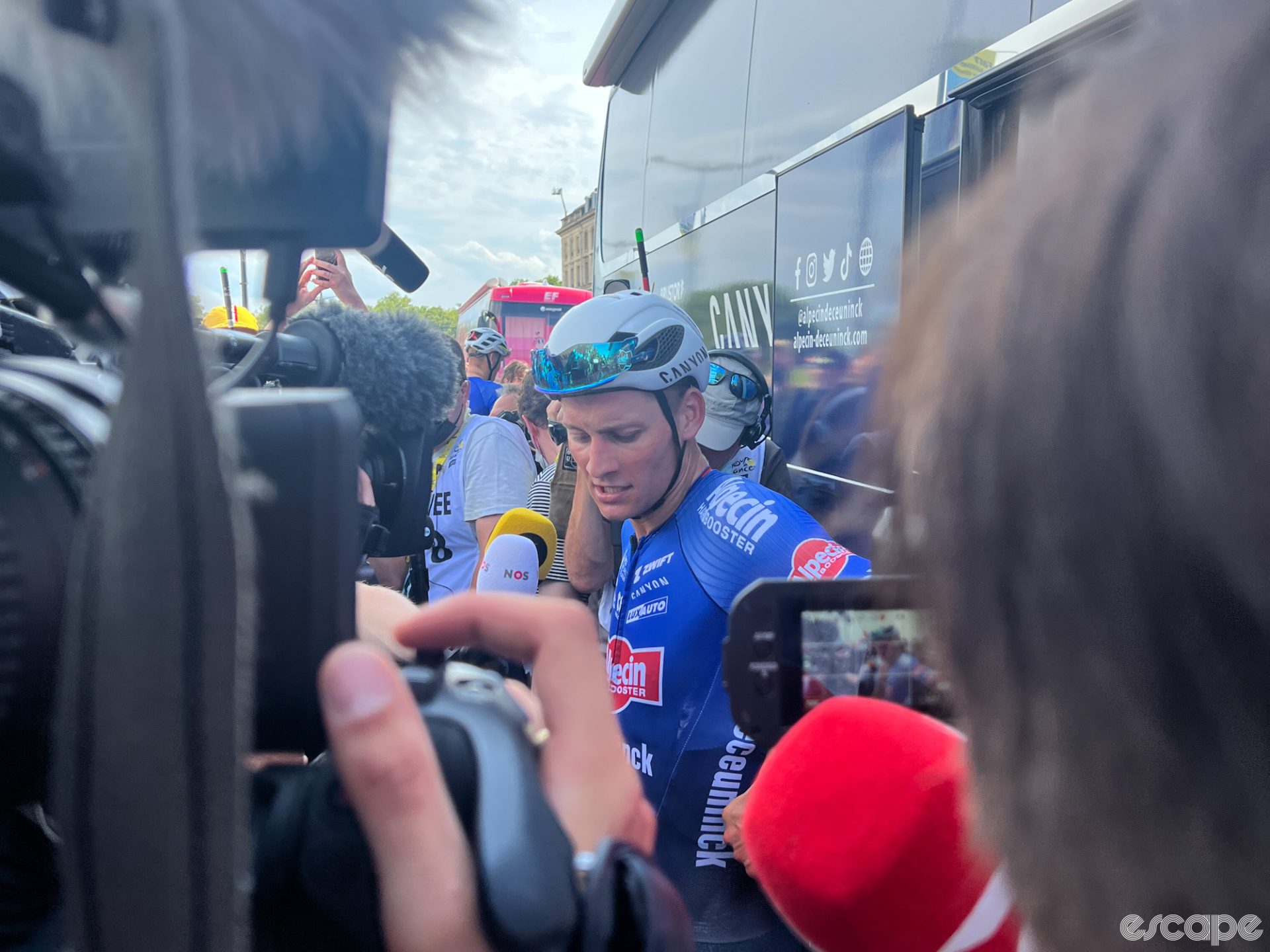
How to get to the Tour
Most of our audience does not live in continental Europe, so it's going to have to be a plane. Whether this trip is worth the carbon footprint is an existential question that lies squarely on your shoulders.
How to get around the Tour
It is possible to do a Tour trip without a rental car, but it won't look much like the itineraries I've put above. You could also do a lot of this by train – that is yet another level of adventure for which I would salute you, but definitely increases complexity.
My suggestion: Get a rental car and bring a bike. Get one of those bikepacking frame bags to stick in the main triangle so you can carry your lunch, your extra wine, your big jacket, and all the rest. You'll use the car to get from one home base to another, then use the bike to get to the actual race and of course to go for some great rides. Without official Tour accreditation stickers on your car, you will struggle to drive anywhere near the actual bike race.
Local governments put out information about road closures close to the stages themselves, and Google Maps is actually quite good at knowing which roads are inaccessible. But the rule of thumb is to ditch the car whenever possible and ride to the race.
Consider a camper van of some sort. This removes the stress around hotels and even dinner, if you have a little cook stove. Bring your bikes, find a good place to camp, and use the camper as a home base.
Tips and Tricks
I canvassed both my fellow Tour reporters as well as a few friends and colleagues who have done leisure trips to the Tour in recent years. Here's what we came up with:
- Download maps to your cycling computer before you leave.
- Book restaurants in advance. This is best done by calling. French restaurants love this practice in general, and if you are on the edge of making it before the kitchen closes (often as early as 8 pm in more rural areas), they will sometimes wait for you. Not always, but sometimes. Plus these are often small towns with a huge influx of people for one night, restaurants fill quickly.
- Plan some ride routes before you leave. Have some big ones and some small ones ready. Get them loaded up on your cycling computer ahead of time.
- Do some non-iconic climbs ... two of our most scenic outings were on unknown or never-raced climbs.
- If you have the opportunity to ride back to somewhere at the end of a stage, do it ... riding with all the spectators and the caravan was a hoot.
- Definitely to take a jumper/jacket up the mountain with you no matter how sunny it is.
- Don't waste time trying to find good coffee, it all tastes kind of bad and you've just got to suck it up.
- Roads generally close 3-4 hours before the race comes through, earlier for mountaintop finishes.
- It's much more interesting and you'll get a lot more out of standing by the buses at the starts and finishes than being anywhere near the podium.
- If you are in a reasonably sized town/city, there's always a Vietnamese restaurant that will be open late, not very busy, and with good food.
- Know the stage timetable. This is available on the Tour de France website for each stage, and usually shows up a few weeks out. It includes arrival times in each town based on a few different average speeds - assume the fastest. It also includes when the caravan is going by, which is good fun.
- Don't try to move with the Tour every day. You'll spend half your life in a rental car. Skip stages, go for rides, and try to catch a few key moments.
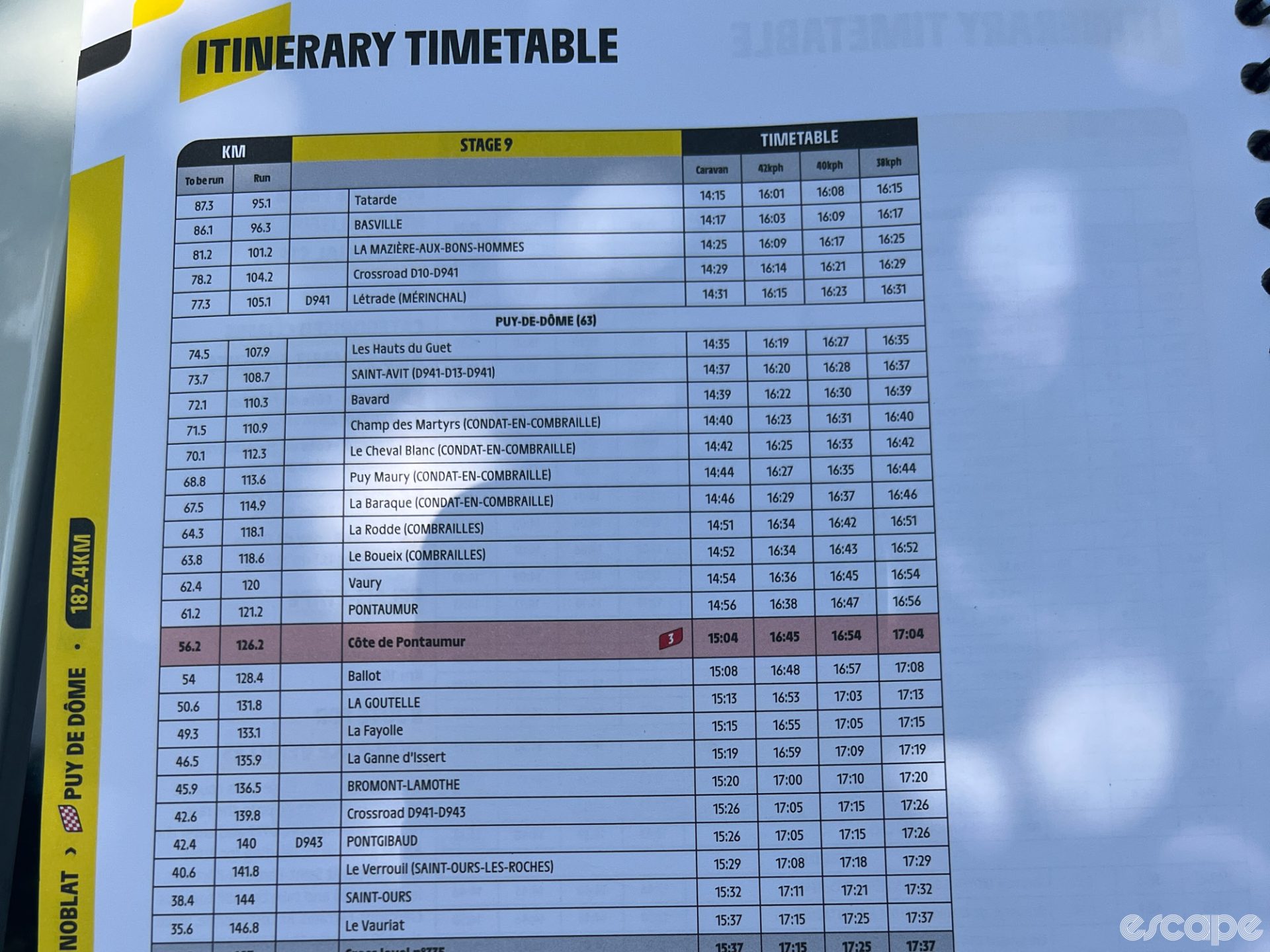
What about guided options?
There are some great, ASO-approved tour guides, but I know nothing about any of them, other than I sent my friend Jordan (that's him in the feature image up top) and his lovely wife Emily on a trip with Sports Tours International and he routinely texted his recent wine intake volume followed by “I’M HAVING A GREAT TIME!” So I think safe to say they had a great time.
Jordan and Emily did a full 14-day thing, and said they would go back and do another, but probably shorter this time (not because they didn’t enjoy 14 days, but because they’ve done it already).
One highlight, Jordan said, was access. This is something you won’t get without going the ASO-licenced guide route. These companies pay the piper (the Amaury family) and therefore their clients get better access than a tourist rocking up on their own.
Plus, seems like they’re just fun. “The benefit of the tour group is that you basically get pampered with food and wine for your five-hour wait for the peloton to come through and it’s in a very choice location with limited access,” Jordan said. “Plus it was fun meeting all the Americans, Euros, and Aussies that were part of our group.”
Warnings:
- If you’re going to drink too much wine on your birthday and then try in vain to rehydrate, do not do so with Pellegrino. Your hiccups will take a day and a half to go away. This tip is courtesy of Jordan. He texted “medically concerned” at one point.
- The gendarmes are not to be fucked with; these are the Scary Police. They can be spotted easily because they’re universally terrifying-looking and have big guns (actual guns and as well as enormous biceps). Just don’t.
- The Tour is massive. You will almost certainly get stuck at some point; in traffic, on the wrong side of the course, something. Be mentally prepared for this moment, don't freak out, go with the flow.
*Four weeks! Most of these tips and tricks apply to the Femmes, except getting around will be far easier because of the slightly smaller crowds. I’ll do another piece on seeing the Femmes along with Abby soon. My early suggestion would be to either pick the Grand Depart or the Alps, and skip the bit in between.
Did we do a good job with this story?

